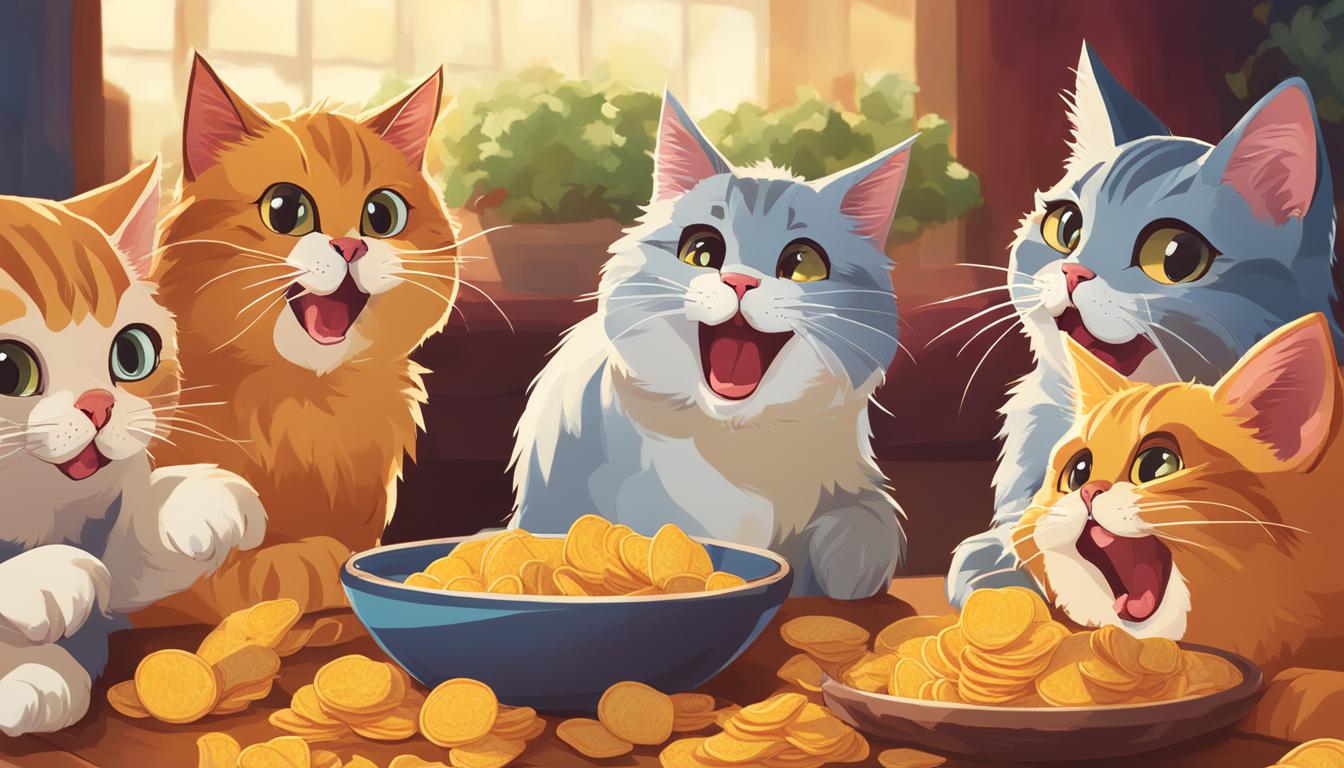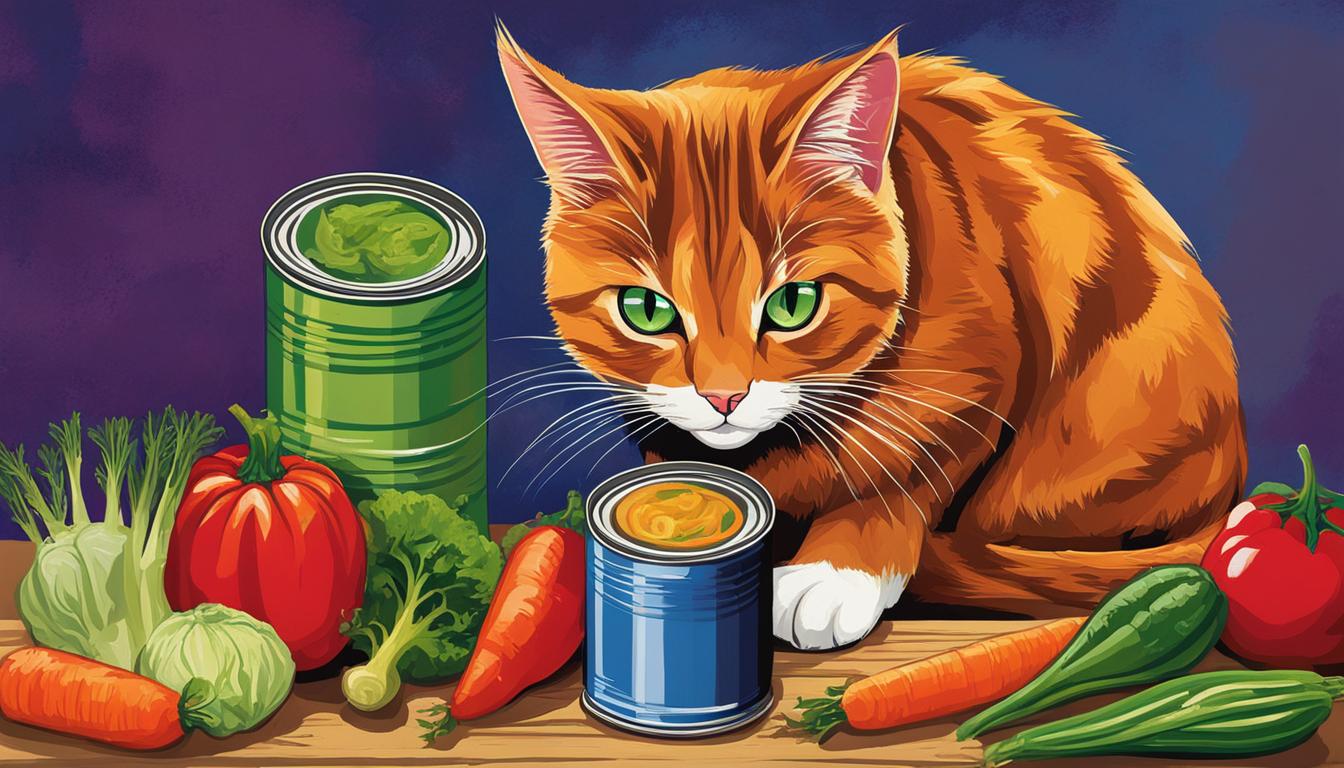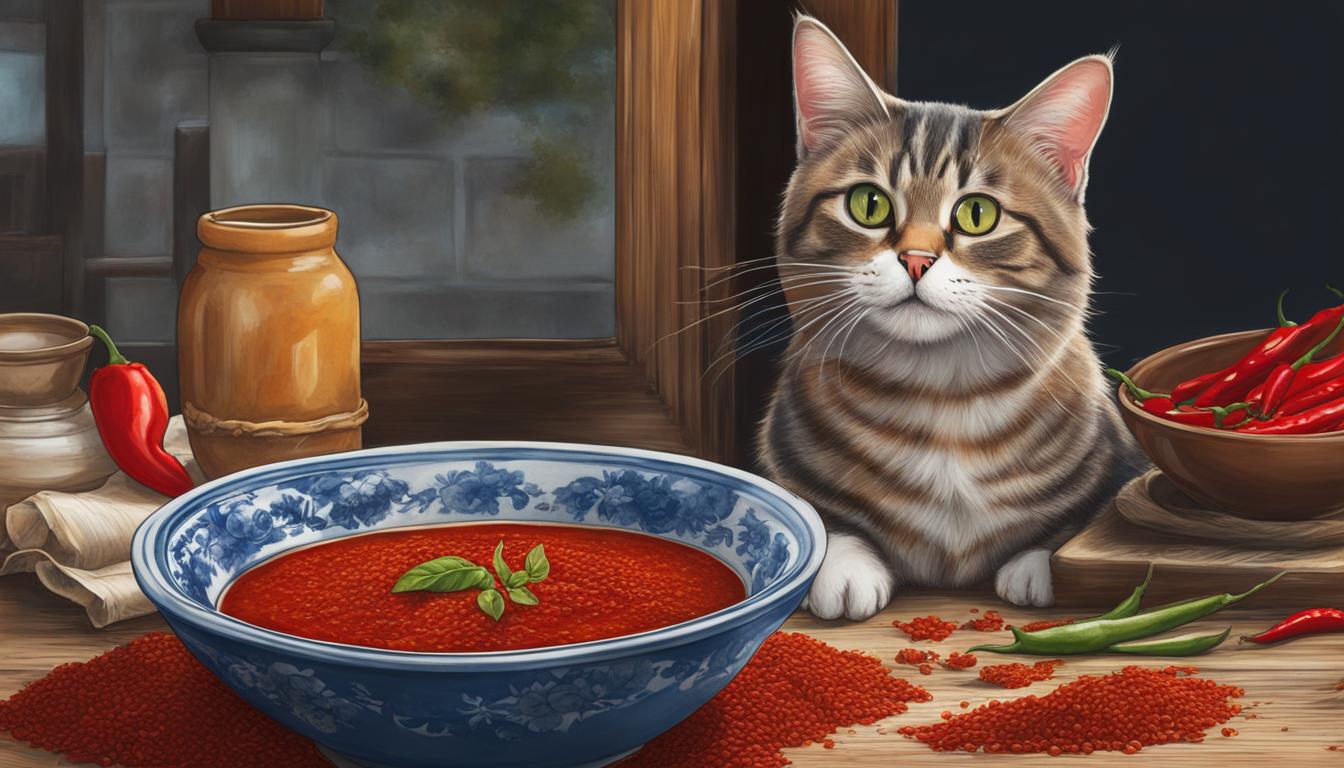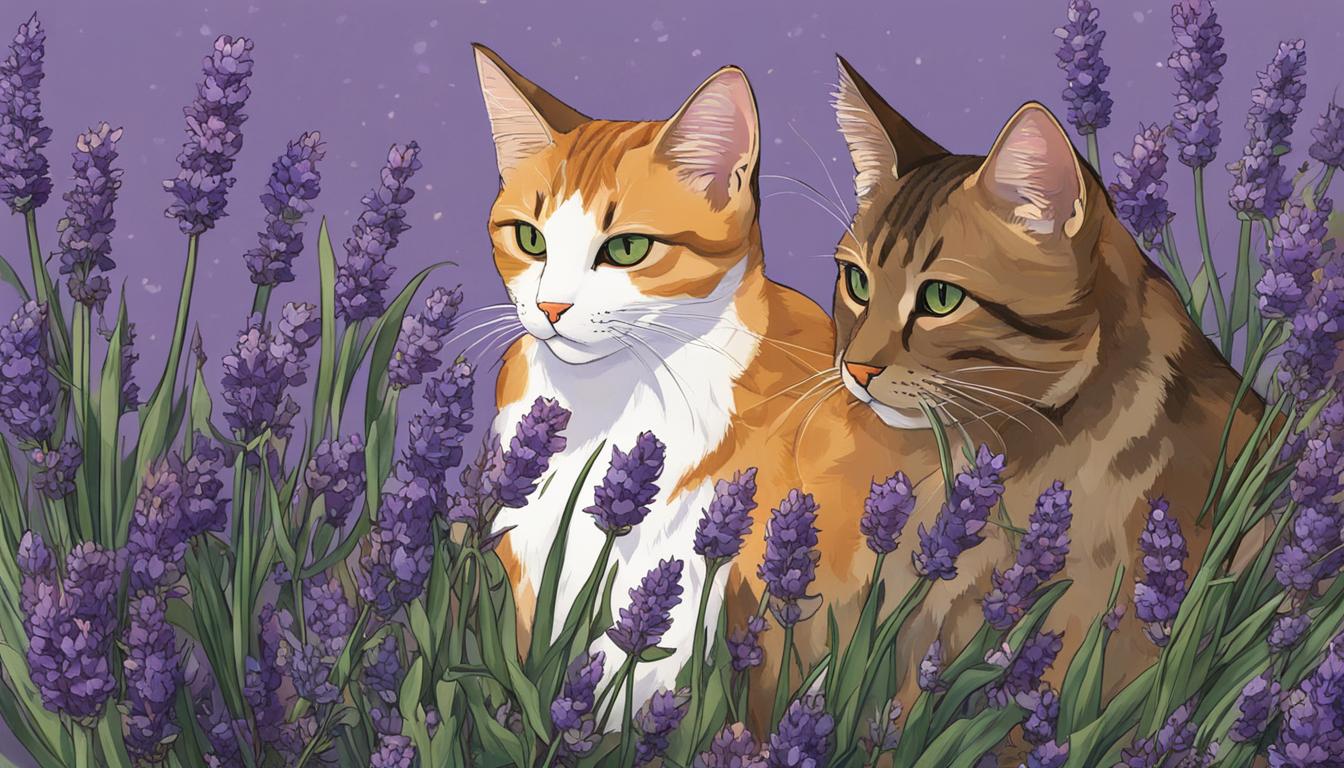Hey there, fellow cat enthusiasts! I’ve been pondering a question that has surely crossed many of our minds: can our feline friends indulge in some tasty snacks like we do? Well, today, I’m here to dig into the fascinating world of feline snacking habits and uncover the truth behind cats and their love for those irresistible treats.
Now, we all know that our feline companions have a reputation for being quite discerning eaters. After all, they are natural-born hunters who thrive on a diet rich in lean meat. But does that mean they can’t enjoy the occasional potato chip or pretzel with us? Let’s find out!
While cats can nibble on certain snacks, it’s important to remember that their dietary needs differ significantly from ours. Cats are obligate carnivores, meaning they require a high-protein diet to thrive. Carbohydrates, commonly found in snacks like chips and pretzels, are unnecessary for their well-being and can even lead to health issues like obesity and diabetes if consumed in excess.
So, can cats indulge in the salty crunch of potato chips or the savory twist of pretzels? Well, it’s best to err on the side of caution and avoid sharing these particular snacks with our feline friends. Instead, let’s explore healthier alternatives that can satisfy their taste buds without compromising their well-being.
Key Takeaways:
- Cats are obligate carnivores and thrive on a high-protein diet.
- Carbohydrates in snacks can lead to obesity and diabetes in cats.
- Avoid sharing potato chips and pretzels with your cat.
- Choose healthier alternatives to satisfy your cat’s snacking cravings.
- Ensure treats provide essential nutrients and complement their natural diet.
The Evolution of a Cat’s Eating Behavior
As obligate carnivores, cats have a natural instinct to thrive on a diet rich in lean meat. However, their eating behavior has evolved over time, particularly for domesticated cats. In their natural setting, cats are solitary predators that hunt for food multiple times a day, consuming small prey items like rodents, bugs, and birds. Domesticated cats have adapted to their indoor environment, leading to different dietary habits and behaviors.
Compared to their wild or outdoor counterparts, indoor cats have lower caloric requirements and a lower activity level. They may eat fewer meals per day and have a more relaxed eating routine. This change in behavior is influenced by their reduced need for continuous hunting and the availability of readily accessible food sources. Understanding and accommodating these differences is essential to ensure a cat’s overall health and well-being.
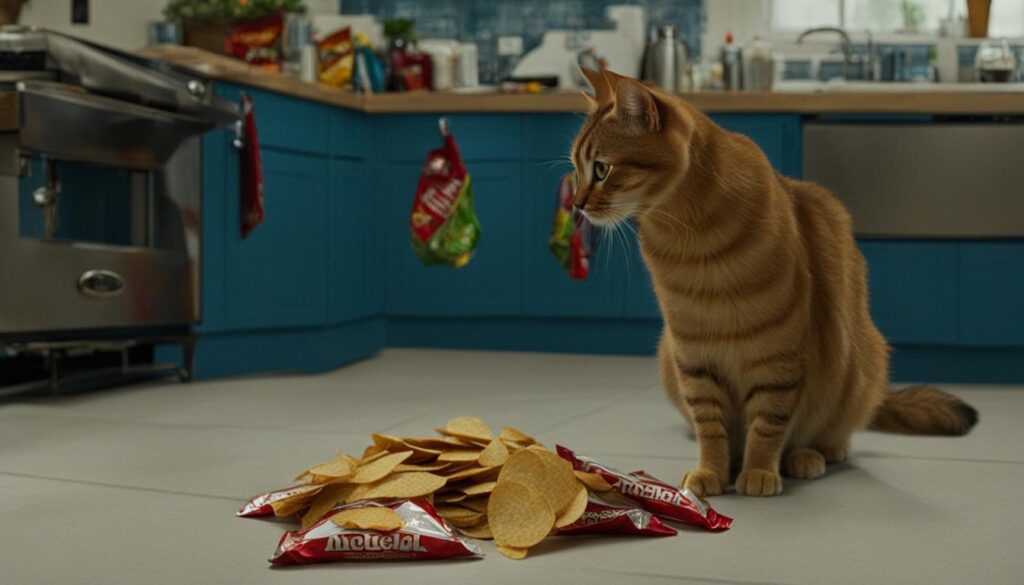
The Impact of Junk Food on Cats
Just like humans, cats may develop a liking for unhealthy snacks, including junk food. While it may be tempting to share our favorite treats with our feline friends, it’s important to note that many human snacks can be harmful to cats. Foods such as potato chips, pretzels, and other snack items are typically high in salt, unhealthy fats, and artificial additives, which can lead to digestive issues and even more serious health problems.
Instead of feeding cats junk food, it’s essential to provide them with homemade snacks that are safe and healthy. Opt for treats made from lean meats, such as chicken or turkey, and avoid adding salt or other seasonings. You can also explore options like freeze-dried meat treats or make your own cat-friendly treats using veterinarian-approved recipes. By choosing nutritious alternatives, you can satisfy your cat’s snacking instincts while keeping them healthy and happy.
| Cats and Junk Food | Homemade Snacks for Cats |
|---|---|
| Can be harmful to cats | Safe and healthy alternative |
| High in salt, unhealthy fats, and artificial additives | Made from lean meats, no added salt or seasonings |
| May cause digestive issues and other health problems | Freeze-dried meat treats or vet-approved homemade recipes |
“Feeding Cats Junk Food: A Recipe for Disaster”
Junk food can have detrimental effects on cats’ health. The excessive salt content can lead to dehydration, while unhealthy fats can contribute to obesity and other weight-related issues. Additionally, artificial additives and flavor enhancers commonly found in processed snacks can cause gastrointestinal problems and allergies. It’s crucial to prioritize your cat’s well-being by offering nutritious, homemade snacks that are specifically tailored to their dietary needs.
What Influences a Domestic Cat’s Eating Habits?
A domestic cat’s eating habits can be influenced by various factors, including the quality and composition of their diet. Providing an ideal meal for a cat involves ensuring it contains animal protein, animal fat, vitamins and minerals, and moisture. When a cat’s diet lacks these essential nutrients, it may develop bad eating habits. Additionally, overfeeding treats can lead to overeating, while undereating can occur if a cat has a repulsion towards certain foods.
To maintain healthy eating habits in cats, it is crucial to provide a balanced diet and avoid overfeeding treats. Overeating can happen when cats do not obtain enough protein from their meals. To prevent nutritional imbalances and health issues, it is important to cater to a cat’s unique dietary needs.
Understanding the factors that influence a cat’s eating habits is essential. By providing a well-balanced diet and avoiding overfeeding, cat owners can ensure their feline companions maintain healthy eating habits and overall well-being.
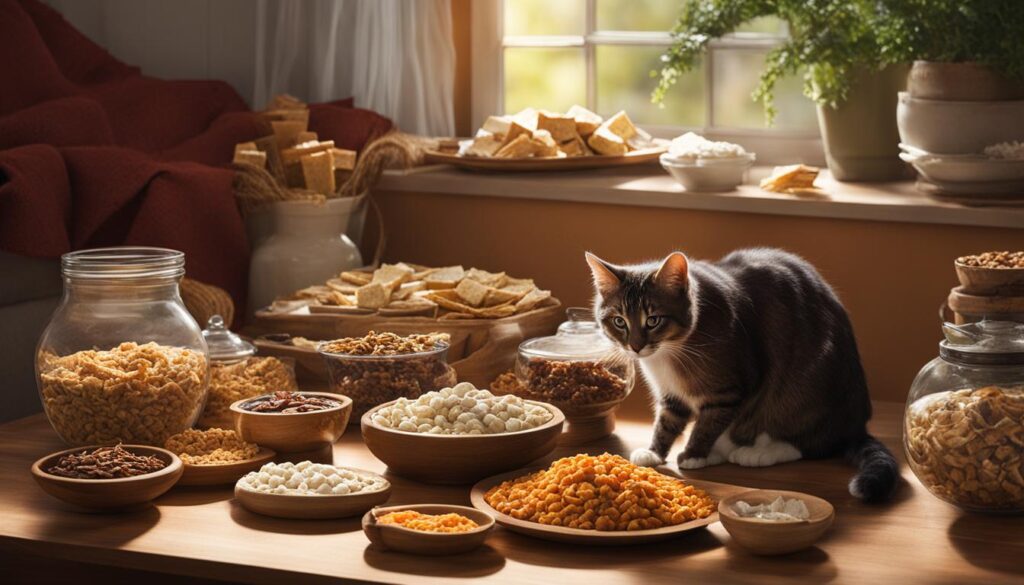
Factors That Influence a Cat’s Eating Habits:
- The quality and composition of their diet
- The presence of essential nutrients, such as animal protein, animal fat, vitamins, and minerals
- The repulsion toward certain foods
- Overfeeding of treats
Portion Control and Feeding Schedule
When it comes to our feline friends, portion control and a consistent feeding schedule are vital for maintaining their health and preventing obesity. Just like humans, cats have different caloric needs based on factors such as body size, activity level, and sterilization status. By understanding and implementing proper portion control, we can ensure that our cats receive the right amount of nutrition without overeating.
Feeding adult cats two to three complete meals a day is recommended. The quantity of food should be determined based on their individual needs. It’s important to consult with a veterinarian to determine the ideal portion size for your cat. They can evaluate your cat’s size, weight, and lifestyle to provide tailored recommendations.
A feeding schedule is equally important as portion control. It helps establish a routine and prevents grazing throughout the day. Free-feeding, where cats have constant access to food, can lead to overeating and weight gain. Instead, set specific meal times and stick to them. This ensures that your cat gets their necessary nutrients at regular intervals.
Feeding Schedule Guidelines
- Divide the daily recommended portion into two to three meals.
- Stick to a consistent schedule, serving meals at the same times each day.
- Set a specific feeding duration, such as 20 minutes, and remove the food once the time is up.
- Avoid leaving food out overnight or for extended periods to prevent spoilage and bacterial growth.
By implementing portion control and a feeding schedule, you can help your cat maintain an optimal body condition. It’s essential to monitor their weight regularly and make adjustments as needed. Remember, a healthy diet and feeding routine contribute to a longer and happier life for your feline companion.
| Benefits of Portion Control | Dangers of Overfeeding |
|---|---|
|
|
Remember, you are in control of your cat’s diet. By implementing portion control and a feeding schedule, you can ensure that your furry friend receives the proper nutrition and maintains a healthy weight. Consult with your veterinarian to determine the best approach for your cat’s specific needs and make adjustments as necessary. A well-balanced diet and proper portion sizes will contribute to a happy and healthy life for your beloved feline companion.
The Fascinating Eating Behaviors of Cats
When it comes to eating, our feline friends exhibit a wide range of behaviors that often leave us curious and entertained. From gobbling down snacks to playing with their food, cats have unique habits that reflect their natural instincts and preferences. In this section, we will explore some of the intriguing eating behaviors observed in cats and what they might mean.
Eating Too Fast
One common behavior in cats is eating too fast, often characterized by gulping down their food without taking the time to savor it. This behavior can be a result of a nutritionally deficient diet or simply the lack of taste stimulation in their meals. To combat this, it’s important to provide cats with a well-balanced diet that includes high-quality proteins and essential nutrients, as well as engaging their senses with flavorful meals.
Playing with Food
Have you ever noticed your cat batting their food around or tossing it up in the air before finally taking a bite? This playful behavior is actually quite common among felines. It can be a sign of boredom or simply a way for them to engage their hunting instincts. To keep your cat entertained during mealtime, consider providing puzzle feeders or interactive toys that stimulate their natural hunting behaviors.
“Cats may exhibit various eating behaviors, such as eating too fast, eating too slow, playing with food, eating alone, hoarding food, or regurgitating.”
Eating Alone
Cats are known for their independent nature, and eating alone is a natural behavior for them. In the wild, cats are solitary hunters who prefer to eat in peace without the presence of other animals. If your cat prefers to dine alone, it’s important to respect their space and provide a calm, quiet environment during mealtime. This will help reduce stress and ensure they can enjoy their food without distractions.
Hoarding Food
Another peculiar behavior in cats is hoarding food. This instinctive behavior is rooted in their survival instincts to store excess food for later consumption. While domesticated cats may not need to store food for survival, the behavior can still persist. If your cat hoards food, be sure to provide them with appropriate portion sizes to prevent overeating and obesity.
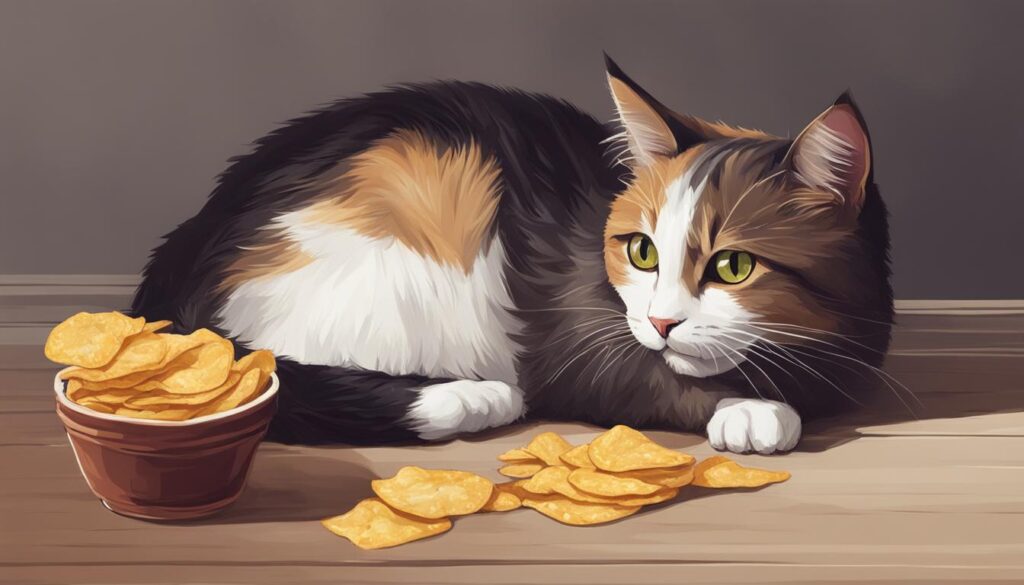
Understanding and observing these eating behaviors in cats can provide valuable insights into their overall well-being. By catering to their individual preferences and ensuring a balanced diet, we can help our feline companions thrive and maintain a healthy lifestyle.
Choosing the Right Treats for Cats
When it comes to treating our feline friends, it’s important to choose snacks that not only satisfy their taste buds but also provide essential nutrients. Treats should never make up more than 10% of a cat’s calorie intake, so it’s crucial to select high-quality options that complement their natural diet.
So, what are some nutritional snacks for felines? Here are a few examples:
- Water-based vegetables like green beans, broccoli, and cauliflower can be a healthy and low-calorie treat option for cats.
- Air-popped popcorn is another snack that cats can enjoy in moderation. Just be sure to avoid adding any salt, butter, or other seasonings.
When choosing store-bought treats, make sure to read the labels and avoid options that contain low-quality proteins, excessive carbohydrates, artificial additives, and flavor enhancers. Look for treats that contain animal protein, animal fat, vitamins and minerals, and moisture, which align with a cat’s natural dietary needs.
If you prefer making homemade treats for your cat, keep the recipe simple and avoid adding sugary ingredients. Some homemade treat ideas include baked fish or chicken, or even freeze-dried meat or fish. Just remember to store homemade treats in the refrigerator or freezer to maintain freshness.
The Benefits of Choosing the Right Treats
By choosing the right treats for your cat, you can reinforce good behaviors and build a strong bond with your feline companion. Nutritional snacks not only provide a tasty reward but also contribute to your cat’s overall health and well-being. When treats are thoughtfully selected and given in moderation, they can be a valuable part of your cat’s daily routine.
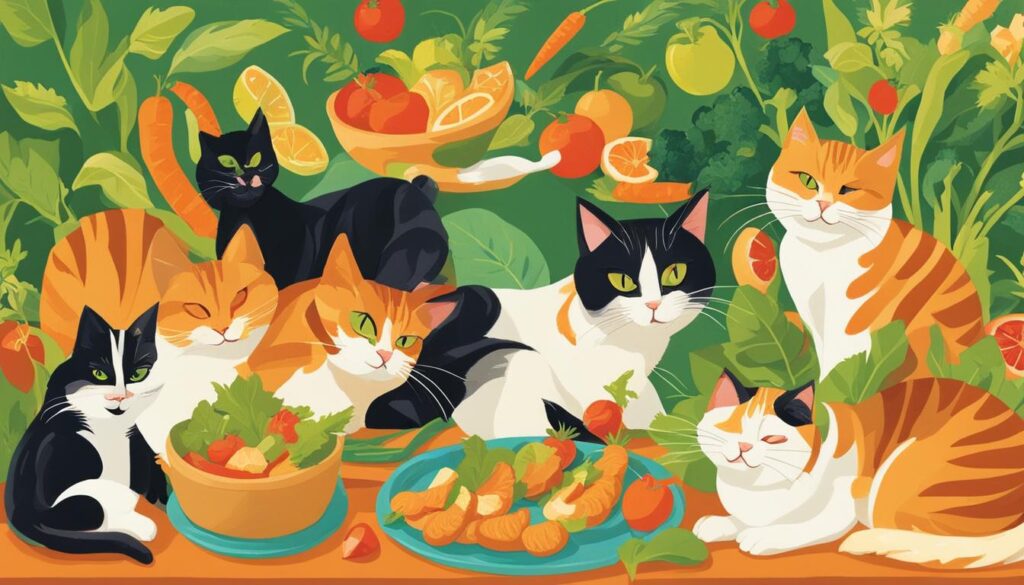
Table: A Comparison of Common Cat Snacks
| Treat Name | Nutritional Benefits | Recommended Serving Size |
|---|---|---|
| Green Beans | Low-calorie and rich in fiber | A few beans as a treat |
| Broccoli | High in vitamins A and C | A few small florets |
| Cauliflower | Rich in antioxidants and fiber | A few small pieces |
| Air-popped Popcorn | Low in calories and provides crunch | A small handful |
Conclusion
As a professional copywriting journalist, I’ve delved into the fascinating world of cats and their snacking habits. From my research, it is clear that cats are obligate carnivores and thrive on a diet rich in animal protein and essential nutrients.
When it comes to treats, moderation is key. It’s important to remember that treats should not exceed 10% of a cat’s calorie intake. Opt for high-quality treats that complement their natural diet and provide the necessary nutrients.
Understanding a cat’s eating behavior is also crucial. By observing their habits, we can establish a feeding schedule, control portion sizes, and maintain their optimal body condition. This is important to prevent obesity and other health issues.
Whether it’s avoiding junk food or making homemade treats, the choices we make can have a significant impact on our feline companions’ well-being. So, let’s be mindful of what we offer them and build a stronger bond by providing them with healthy and nutritious options.
FAQ
Can cats eat potato chips or other snack foods?
Cats should not eat potato chips or other snack foods. These types of foods are often high in salt, unhealthy fats, and artificial additives, which can be harmful to cats. Cats have specific dietary requirements and should stick to a high-protein, balanced diet.
Can cats have pretzels or salty snacks?
Cats should not consume pretzels or salty snacks. These types of snacks are high in sodium, which can be detrimental to a cat’s health. Cats require a specific balance of nutrients and should not be given human snacks that are not designed for their dietary needs.
What are some safe human snacks for cats?
While it is generally best to stick to cat-specific treats, there are a few human foods that can be given to cats in moderation. Some examples include small pieces of cooked chicken, plain pumpkin, and water-based vegetables like green beans, broccoli, and cauliflower. However, it is important to consult with a veterinarian before introducing any new foods into a cat’s diet.
Why is portion control important for cats?
Portion control is crucial for maintaining a cat’s optimal body condition and preventing obesity. Overfeeding can lead to weight gain and associated health issues, while underfeeding can result in nutritional deficiencies. It is important to establish a feeding schedule and control the amount of food given to ensure a cat’s overall health and well-being.
How many meals should adult cats have per day?
Most adult cats should have two to three complete meals per day. The quantity of food depends on factors such as body size, activity levels, sterilization status, and pregnancy status. It is important to adjust portion sizes accordingly and avoid overfeeding or underfeeding.
Why is understanding a cat’s eating behavior important?
Understanding a cat’s eating behavior can help identify any potential issues or concerns. Different eating behaviors, such as eating too fast, eating too slow, or regurgitating, can indicate underlying health or behavioral problems. By observing and understanding these behaviors, cat owners can ensure their cat’s well-being and address any potential issues promptly.
What should I look for in cat treats?
When choosing treats for cats, it is important to opt for high-quality options that complement their natural diet. Treats should contain animal protein, animal fat, vitamins and minerals, and moisture. Avoid treats with low-quality proteins, excessive carbohydrates, artificial additives, and flavor enhancers. It is also recommended to consult with a veterinarian to ensure the treats are appropriate for a cat’s specific dietary needs.

